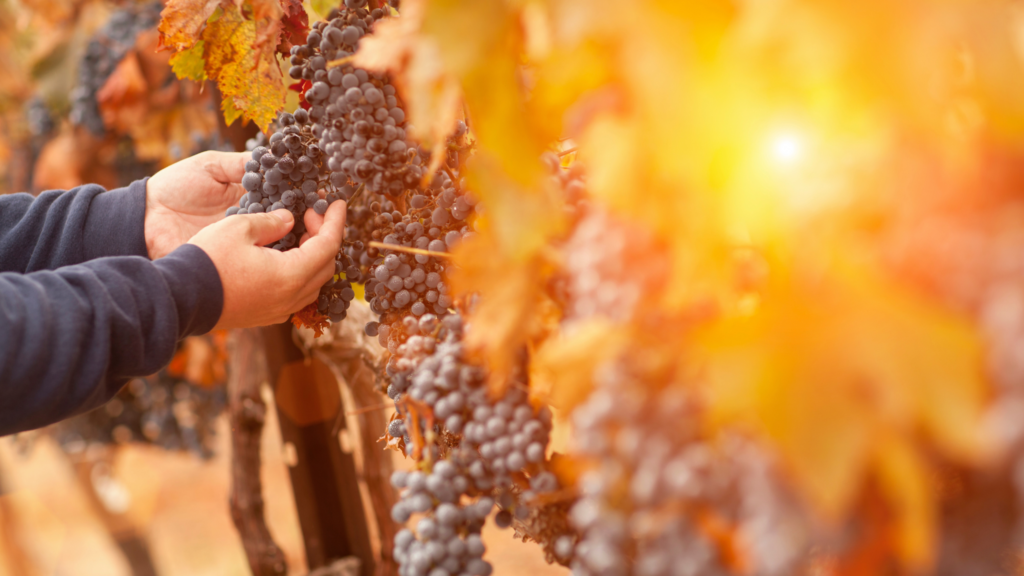Table of Contents
- Exploring the Interplay of Balance and Complexity in Wine: How to Recognize and Appreciate the Subtle Nuances
- The Role of Terroir in Crafting Balanced and Complex Wines: A Look at the Impact of Climate, Soil, and Viticulture Practices
- The Art of Blending: How Winemakers Create Balanced and Complex Wines Through the Skillful Combination of Varietals
- Aging and Bottle Maturation: How Time Enhances Balance and Complexity in Wine
- Q&A
“Experience the Perfection of Balance and Complexity in Every Glass of Wine!”
Wine is a complex and nuanced beverage that has been enjoyed for centuries. It is a beverage that can be enjoyed in many different ways, from a casual glass with dinner to a formal tasting. The complexity of wine is what makes it so enjoyable, and it is important to understand the importance of balance and complexity in wine in order to truly appreciate it. Balance and complexity in wine are essential for creating a well-rounded and enjoyable experience. Balance refers to the harmony between the different components of a wine, such as its acidity, tannins, sweetness, and alcohol. Complexity refers to the various aromas and flavors that can be found in a wine, which can range from fruity to earthy to spicy. By understanding the importance of balance and complexity in wine, one can better appreciate the nuances of the beverage and enjoy it to its fullest.
Exploring the Interplay of Balance and Complexity in Wine: How to Recognize and Appreciate the Subtle Nuances

When it comes to wine, balance and complexity are two of the most important characteristics to consider. Balance is the harmony between the different components of the wine, such as the acidity, tannins, sweetness, and alcohol. Complexity is the range of flavors and aromas that the wine has to offer.
Recognizing and appreciating the subtle nuances of balance and complexity in wine can be a challenge, but it is an important skill to have. Here are some tips to help you recognize and appreciate the subtle nuances of balance and complexity in wine:
1. Look for a harmonious balance between the different components of the wine. A good wine should have a balance between the acidity, tannins, sweetness, and alcohol. If one component is too overpowering, it can throw off the balance of the wine.
2. Pay attention to the aromas and flavors of the wine. A complex wine will have a range of aromas and flavors, such as fruits, spices, herbs, and even earthy notes.
3. Consider the texture of the wine. A balanced wine should have a smooth texture, while a complex wine should have a more layered texture.
4. Take your time when tasting the wine. Don’t rush through it. Take your time to really savor the flavors and aromas of the wine.
5. Consider the finish of the wine. A balanced wine should have a pleasant finish, while a complex wine should have a lingering finish.
By following these tips, you can begin to recognize and appreciate the subtle nuances of balance and complexity in wine. With practice, you will be able to identify the different components of the wine and appreciate the complexity and balance of the wine.
The Role of Terroir in Crafting Balanced and Complex Wines: A Look at the Impact of Climate, Soil, and Viticulture Practices
When it comes to crafting balanced and complex wines, terroir plays a major role. Terroir is a French term that refers to the unique combination of climate, soil, and viticulture practices that contribute to the character of a wine. In this article, we’ll take a look at how each of these elements affects the flavor and complexity of a wine.
Climate is one of the most important factors in determining the character of a wine. Different climates can produce different flavors and aromas in a wine. For example, a cool climate will produce wines with higher acidity and more delicate aromas, while a warm climate will produce wines with more intense flavors and aromas.
Soil is also an important factor in determining the character of a wine. Different soils can produce different flavors and aromas in a wine. For example, a soil with a high clay content will produce wines with more body and structure, while a soil with a high sand content will produce wines with more delicate aromas and flavors.
Finally, viticulture practices can also have an impact on the character of a wine. Different viticulture practices can produce different flavors and aromas in a wine. For example, a wine made with grapes grown in a vineyard with a high canopy will produce wines with more intense aromas and flavors, while a wine made with grapes grown in a vineyard with a low canopy will produce wines with more delicate aromas and flavors.
In conclusion, terroir plays an important role in crafting balanced and complex wines. The unique combination of climate, soil, and viticulture practices can have a major impact on the character of a wine. By understanding the impact of each of these elements, winemakers can craft wines that are balanced and complex.
The Art of Blending: How Winemakers Create Balanced and Complex Wines Through the Skillful Combination of Varietals
Have you ever wondered how winemakers create those complex and balanced wines that you love so much? The answer lies in the art of blending. Blending is the skillful combination of different varietals to create a unique and flavorful wine.
When winemakers blend, they are looking to create a wine that is balanced and complex. This means that the flavors of the different varietals should complement each other, rather than overpowering one another. To achieve this, winemakers must carefully consider the characteristics of each varietal and how they will interact with one another.
The first step in blending is to select the varietals that will be used. Winemakers will often choose varietals that have similar characteristics, such as similar acidity levels or tannin levels. This helps to ensure that the flavors of the different varietals will blend together harmoniously.
Once the varietals have been selected, winemakers will then decide on the proportions of each varietal that will be used. This is where the art of blending really comes into play. Winemakers must consider the flavor profile of each varietal and how it will interact with the other varietals. They must also consider the body and texture of the wine, as well as the overall balance of the blend.
Once the proportions have been decided, the winemaker will then begin the process of blending. This involves combining the different varietals in a tank and stirring them together. The winemaker will then taste the blend and adjust the proportions as needed to achieve the desired flavor profile.
The art of blending is a complex and delicate process, but it is essential for creating balanced and complex wines. By carefully selecting the varietals and adjusting the proportions, winemakers can create unique and flavorful wines that are sure to please. So next time you enjoy a glass of wine, take a moment to appreciate the skill and artistry that went into creating it.
Aging and Bottle Maturation: How Time Enhances Balance and Complexity in Wine
Time is an essential ingredient in the production of great wine. Aging and bottle maturation can help to enhance balance and complexity in wine, making it more enjoyable to drink.
Aging is the process of storing wine in barrels or tanks for a period of time. This allows the wine to develop its flavor and complexity. During this time, the wine will undergo a number of chemical reactions, such as oxidation, which can help to soften tannins and add complexity. The length of time that a wine is aged will depend on the type of wine and the desired flavor profile.
Bottle maturation is the process of storing wine in bottles for a period of time. This allows the wine to continue to develop its flavor and complexity. During this time, the wine will undergo a number of chemical reactions, such as oxidation, which can help to soften tannins and add complexity. The length of time that a wine is bottle-matured will depend on the type of wine and the desired flavor profile.
Aging and bottle maturation can help to enhance balance and complexity in wine. As the wine ages, the tannins will soften, allowing the other flavors to come through more clearly. The oxidation process can also help to add complexity to the wine, as it will interact with the other components in the wine. This can help to create a more balanced and complex flavor profile.
In addition to enhancing balance and complexity, aging and bottle maturation can also help to improve the quality of the wine. As the wine ages, it will become more concentrated and intense, allowing it to develop a more complex flavor profile. This can help to make the wine more enjoyable to drink.
Aging and bottle maturation are essential processes in the production of great wine. By allowing the wine to age and mature, winemakers can help to enhance balance and complexity in the wine, making it more enjoyable to drink.
Q&A
1. What is the importance of balance and complexity in wine?
Balance and complexity in wine are important because they create a harmonious flavor profile that is pleasing to the palate. Balance is achieved when the various components of a wine, such as acidity, tannins, sweetness, and alcohol, are in harmony with each other. Complexity is achieved when a wine has multiple layers of flavor and aroma that can be experienced over time. Both balance and complexity are essential for creating a great tasting wine.
2. How can winemakers achieve balance and complexity in their wines?
Winemakers can achieve balance and complexity in their wines by carefully selecting the grapes used, controlling the fermentation process, and aging the wine in the right conditions. The winemaker must also consider the terroir, or the environment in which the grapes are grown, as this can have a significant impact on the flavor and complexity of the wine. Additionally, blending different grape varieties can help to create a more complex flavor profile.
3. What are some of the benefits of having a balanced and complex wine?
The benefits of having a balanced and complex wine are numerous. A balanced and complex wine will have a more interesting flavor profile that can be enjoyed over time. Additionally, a balanced and complex wine will be more food-friendly, as it will be able to pair well with a variety of dishes. Finally, a balanced and complex wine will be more enjoyable to drink, as it will have a pleasing flavor that is not too overpowering.
4. What are some common mistakes that winemakers make when trying to achieve balance and complexity in their wines?
Some common mistakes that winemakers make when trying to achieve balance and complexity in their wines include over-extracting tannins, over-oaking, and over-fining. Additionally, some winemakers may not take into account the terroir when selecting grapes, which can lead to an unbalanced and one-dimensional flavor profile. Finally, some winemakers may not take the time to properly blend different grape varieties, which can lead to a lack of complexity in the wine.In conclusion, balance and complexity are essential components of a great wine. Balance is achieved when the various components of a wine are in harmony, while complexity is achieved when the various components of a wine interact to create a unique flavor profile. Balance and complexity are both important for creating a wine that is enjoyable to drink and that will stand the test of time. Achieving balance and complexity in a wine requires skill and knowledge, and is a process that should be respected and appreciated.
![]()










